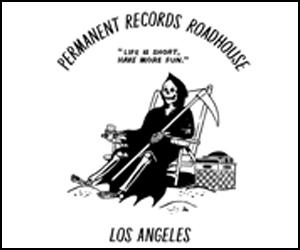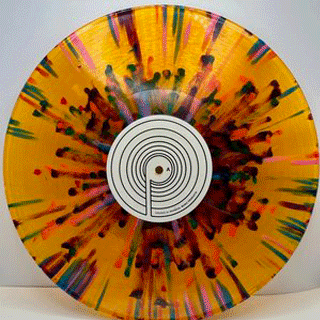Sigur Rós soars grandiosely in song and staging at the Hollywood Bowl
Steven Mirkin on
0

For all its alluring beauty, the music of Sigur Rós keeps its deeper meanings close to the vest. And make no mistake, that reticence has been a big part of their appeal. This is a band that some accused of selling out when they switched from singing in Hoplandish, their portmanteau language, to their native Icelandic — or in other words, being understood by some 300,000 people instead of a dozen.
Their stunning show at the Hollywood Bowl on Saturday night — the Icelandic trio’s first appearance there in a decade — showcased the band at both its most dreamily cosmic and fearlessly volcanic, with inventive staging and lights that only added to the grandeur and mystique.
Pared down to a three-piece — Jón Thór Birgisson on lead vocals and guitar, Georg Hólm on bass and Orri Páll Dýrason on drums and percussion, with all three of them also playing various keyboards, synthesizers, computers — the sound remains impressively scaled. The aerosol, bowed guitar and billowing organ drones slowly build and decay, as the bass lumbers and rumbles, and Birgisson’s pure, high-pitched, almost prayerful vocals have a spiritual effect. It’s a deepening air of mystery that keeps Sigur Rós from turning pompous or fatuous.
In the early going, the chord changes almost melt into each other, the slow pace of the songs allows plenty of time to take in the details: the rhythmic crunch, like the boots marching through snow that became the beat and the glassy chimes that twinkled on the edge of “Glósóli, the shimmering tones, like rubbing the rim of a half-filled wineglass, that float to the surface of “Ekki Mukk,” the aching attenuated sustain adding harmonic majesty to “E-Bow,” and the sustained tension of the slow-burn rave-up that climaxed “Smáskifa,” and ended the band’s first set.
Starting with the band’s most recent single, “Óveður,” the second set leaned in a more prog-rock direction, usually when Dýrason tucked himself behind the drumkit and picked up the mallets. Those moments were the closest Sigur Rós came to being a classic power trio, as the drums became a lead instrument, and Dýrason found the balance between power and swing, chaos and restraint. This was also when the music turned most expansive, luxuriating in the extended decay of a guitar and the tightening intensity of adding still another layer of feedback to an extended coda that, just as it feels like it’s gone on too long, explodes into a twinkling shower, the sounds shimmering like light through a prism.
The staging only adds to the power, even if it, too, wants to obscure as much as reveal. The band performs on a set that looks like an industrial area — metal frames with retractable screens trisect the stage, glass curtains can be dropped in to form walls between the band and the audience. The drums are set to the far left of the stage, and a riser is filled with keyboards and computers. This lets the band move around from song to song, sometimes all seating around the drums, others lined up at the rear riser. For a good deal of the show they are backlit, often only by the reflected light of the video screens.
The images on the screen are often distorted rustic views, their lines constantly blurred and bleeding into each other, turning into new images — occasionally a face, other times morphing into a line drawing that itself morphs into what looks like a colony of insects. Some of these videos show up on the Bowl’s video screen, alternating with shots of the band — in high-contrast black-and-white images, shot from extreme angles, and behind screens of filters. The lights on-stage can give the illusion that, for all the songs’ deliberate tempos and slow decay, the band is hurtling through space.
It ends up giving the sense of world that, for all its glorious sounds and beauty, holds untold, unknowable depths.
In a lovely touch, the show was opened by the International Space Orchestra and Choir. A band made up by actual space scientists — including members who work at NASA, SETI, and Singularity University — they played a short program of their arrangements of Sigur Rós songs. While their sometimes wobbly playing marked them as an amateur ensemble, their enthusiasm (and the fact that they all played in uniform) more than made up for it. It was charming, especially during their final song’s rave-up Vanessa Kuroda, a Bio Sentinel Spacecraft Communication Subsystem Lead when she’s not playing piano, ran out on the Pool Section’s runway to get the crowd at the sold-out Bowl involved.
Sigur Rós returns to L.A. next spring, appearing with Esa-Pekka Salonen and the Los Angeles Philharmonic at Disney Hall on April 13-15 2017, as part of next season’s Reykjavik Festival.




Leave a Reply